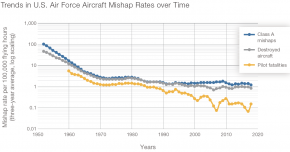Or it could be to provide ONE extra squadron and a pool of attrition spares. IF the full notional 28 aircraft are needed. Don't read too much into figures where there's little or no definition of the scope provided.That's really interesting re the C variant - thanks for the insight!
I'm curious regarding the next phase of the program with $4.5-6.7b allocated for 'additional air combat capability' - this seems like a higher figure than needed for just one additional F-35 squadron, on face value it looks as if it could cover up to two additional squadrons based on most recent unit pricing? Noting that air teaming (e.g. loyal wingman) is budgeted separately for $7.4-11b.
oldsig


